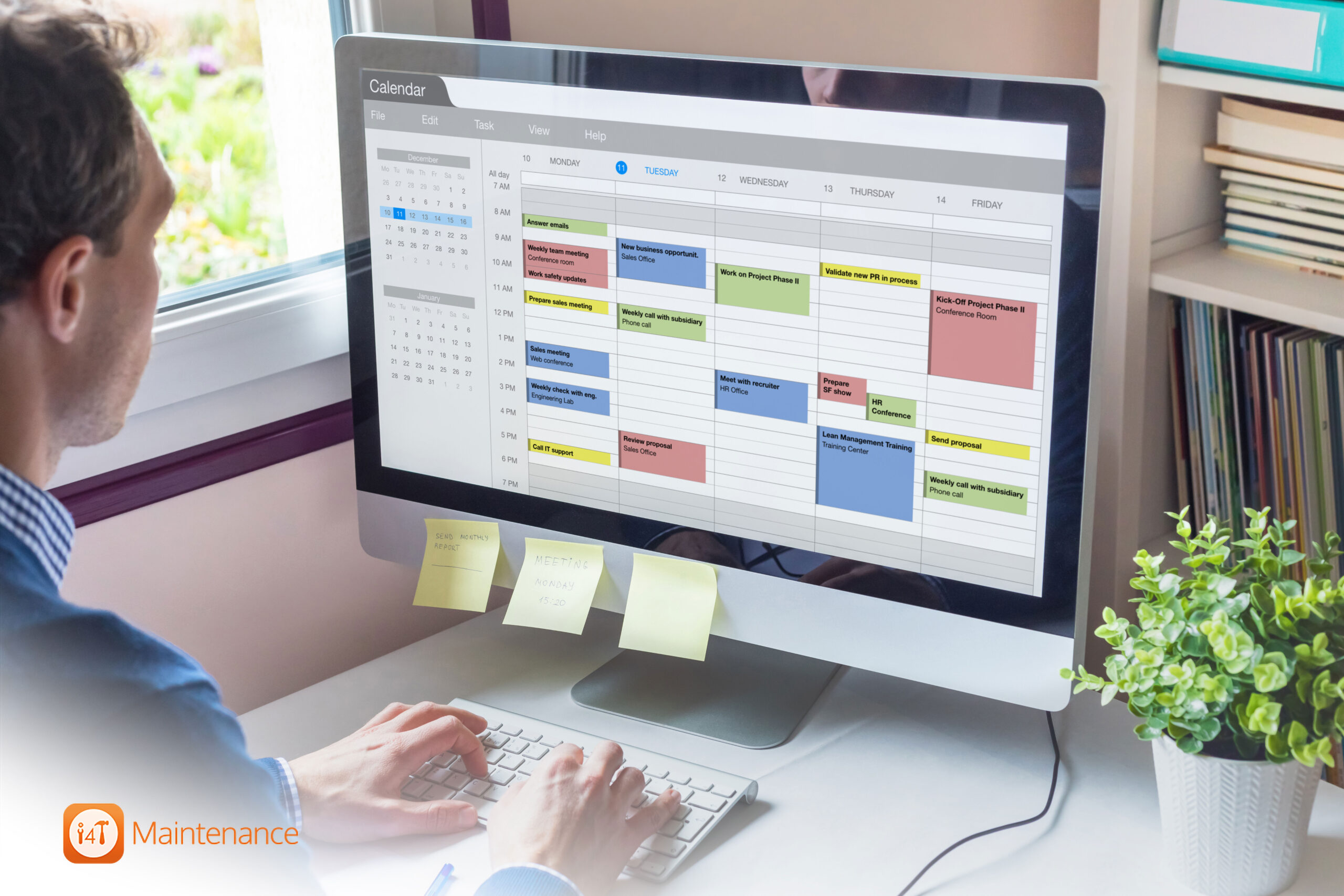You understand how crucial it is to maintain your property in excellent condition if you work as a real estate agent or property manager. You can do that with the help of effective property repair management.
Property repair management guarantees that your property is secure, functions properly, and increases in value. It also ensures tenant and landlord satisfaction.
If you wish to improve how you handle property management, here are five essential steps in handling property repairs.
- Property assessment: Assessing a property is carefully inspecting it to determine what needs to be addressed.
- Prioritizing repairs: After determining what needs to be corrected, you must choose which repairs to complete first based on their importance, cost, and other crucial variables.
- Creating a budget and making purchases: This is the process by which you determine how much money you will need for the repairs and purchase the equipment and labor necessary.
- Execution and oversight: This is the stage at which you carry out the repairs and guarantee their accuracy.
- Evaluation and upkeep: After repairs are made, you inspect to make sure they were done correctly. Then, by establishing routine inspections, you ensure the property remains in good condition.
Let’s now dig deeper into each of these steps.
Step 1: Property assessment

Why it’s crucial to conduct a thorough property assessment
A property assessment is like giving your building a health check. The first step is to examine the property and determine what may require repair. It’s crucial because you can’t solve a problem you are unaware of.
An accurate property evaluation enables you to identify issues before they worsen. You will ultimately save time, money, and hassle by doing this. Additionally, it guarantees that the property is safe and comfortable for residents.
Tools and advice for property evaluation
You’ll need a few different tools and advice when evaluating a property. Start by giving the site a brief tour. Pay attention to any obvious issues, such as leaks, cracks, and peeling paint. Make sure to peek outside as well!
Making a list of things to do is also quite beneficial. You will recall everything better as a result. You can create your own property evaluation guides or choose from a wide selection available online.
Without the proper equipment, some issues could be difficult to identify. For instance, a moisture meter and a thermal camera can be used to discover hidden leaks and insulation issues, respectively.
A professional can also assist you with tasks like looking for pest infestations, ensuring the structure is secure, or inspecting the wiring. They have the skills and resources to discover issues that may be difficult to see otherwise.
Identifying areas that require repair
A property evaluation seeks to identify areas that require repair. There are numerous possibilities for this.
For instance, you can be searching for significant issues with the structure itself, such as a break in the base. You might be on the lookout for things that require repair, such as a broken window or a leaky pipe. Or perhaps you’re seeking outdated bathrooms or kitchens that could be improved.
Keep in mind that not all issues are apparent. A roof can appear to be in good shape from the ground, but up close, issues might become apparent. Because of this, you must conduct a complete property survey using the appropriate equipment and techniques.a
Step 2: Prioritizing repairs

What to think about when choosing repairs
You can choose what to correct first once you are aware of what needs to be fixed. Making a list is a good starting point. Determine what tasks must be completed immediately, what can wait a little, and what can be postponed to a later date.
Consider the urgency of the repair, the cost, the improvement the property will experience following the repair, and the significance of the repair for comfort or safety.
Achieving a balance between necessity, expense, and long-term consequences
The secret to picking repairs is frequently striking the correct balance between how quickly a repair must be completed, how much it will cost, and how much it will benefit the property in the long run.
Urgency refers to how soon a fix must be completed. For instance, a leaky roof needs to be replaced right away to prevent water damage in other areas of the building. However, you might not immediately need to update your kitchen.
Cost is the estimated sum of money required to repair something. You can choose to postpone expensive repairs until you have more funds.
The long-term impact is how much the repair will benefit the property overall. For instance, a building’s increased insulation may cost money now, but it will likely save money in the long run on energy costs.
Creating a repair schedule

Once you’ve selected what order to perform the repairs in, create a repair plan. This schedule outlines when each fix will be carried out.
You can better manage your time and money if you have a strategy for maintenance.
Additionally, it informs the tenants when repairs will be made so they may schedule their time accordingly.
Remember that a fixed plan is not a firm commitment. Occasionally, you might need to adjust your plans if a new remedy immediately becomes necessary or if a repair costs more or less than you anticipated. Nevertheless, having a plan is incredibly beneficial even when circumstances change. Home repairs become considerably simpler and less stressful as a result.
Step 3: Creating a budget and making purchases

Budgeting for repairs
The following stage is to determine how much money you can spend on each remedy after deciding what order to execute the repairs in and creating a timeline. This step is crucial since it enables you to determine what can be fixed immediately and what might need to wait.
When creating your budget, consider the costs of labor and supplies. Don’t forget to set aside some additional cash in case there are any unforeseen costs associated with the fix.
Remember that repairs can be costly, but they are also an investment. They can increase the property’s value and improve the living environment.
Making as few repairs as possible
When creating your budget, consider how to maximize your financial resources. This may suggest:
- Looking for the greatest bargain when choosing products or hiring contractors.
- Think about whether an expensive treatment could prevent more severe issues in the future. Decide if it is preferable to remedy something right away or if it can wait.
- Consider whether performing numerous modest improvements at once rather than one at a time could be more cost-effective.
The objective is to strike a balance between your present financial situation, potential future benefits, and the property’s overall value.
Identifying tools and contractors you require
It’s time to gather the resources you’ll need for the repairs once you’ve settled on pricing. To accomplish this, you must locate the necessary materials and employ technicians.
When looking for materials, take into account both price and quality. Although less expensive products may be cheaper now, they can require more repairs down the road.
Before hiring someone, be sure to perform some research. Find dependable contractors, who have positive evaluations, and demand reasonable rates for their job.
Make sure to get multiple quotes. Keep in mind that not always the lowest-priced provider is the best. Effective work can ultimately save you money and worry.
Step 4: Execution and oversight

Ensuring that the work is done properly
Everything must be done correctly while fixing something. All of your preparation and spending begins to come together at this stage. The property will stay in good shape if the repairs are made correctly and last for a long time. However, if you don’t perform them correctly, you might lose time and money, and make residents unhappy.
Verifying the quality of work done
Even if you hired extremely skilled contractors to complete the repairs, you should still monitor their work. By doing this, you can guarantee that the fixes are completed promptly and to your standards. Here are a few ideas:
- Consult the staff: Keep in touch with those who are making the repairs. Make certain they understand what you want of them and by when.
- Track progress: Don’t worry if you can’t visit the site. Track their progress in real-time with property repairs management software.
- Hire a Manager: You might want to hire a project manager if there is a lot of work going on and you are unable to keep up with it all. This person can handle the daily tasks and keep you informed of the situation.
- Request Updates: Inquire about the status of the fixes from the individuals working on them. This might help you get a good sense of how things are going and whether there are any potential issues.
Proactive problem-solving
Even with careful planning, issues can still arise occasionally. The work may take longer than expected, new issues may need to be fixed, or the supplies may not arrive on schedule. If it does, don’t be concerned! Reread your plan, consider your options, and adjust as necessary.
It may be necessary to rearrange the fixes, invest more money in them, or allow the workers more time to complete them. Everyone needs to be aware of what is happening when something like this occurs. Make sure the residents and property owners are aware of the situation and your new approach.
Step 5: Evaluation and upkeep

Verifying the accuracy of the work
As soon as the task is finished, it’s crucial to check that everything was fixed as per SLAs.
After the fix, we verify to see if the work was done correctly and if it complies with the requirements. Not only do we want to make sure the task was done correctly, but we also want to retain a record for the future, therefore this is crucial. This documentation may be used to assist you obtain a refund under the guarantee if something goes wrong in the future.
Carry out routine maintenance
It entails routinely looking for and addressing minor issues to prevent them from worsening and becoming more expensive.
Regular upkeep guarantees the property’s functionality, appearance, and safety.
It is also more cost-effective in the long run to fix a potential problem now than later.
Creating a long-term maintenance plan
Given the significance of routine maintenance, it is obvious that you require a long-term maintenance strategy. This plan outlines the routine inspections and minor repairs that must be made to the property to keep it in top condition.
Each component of the property receives a customized maintenance program as part of this long-term property management plan, depending on what it requires. For instance, HVAC systems can require twice-yearly inspection and maintenance, and a building’s exterior might require a fresh coat of paint every few years.
You can make sure the property is well-maintained and that nothing is left to chance with a long-term property maintenance plan.
This helps spread out the cost of repairs and maintenance over time and lessens the likelihood that major repairs will come as a surprise to you.
Conclusion
Property Repair Management is a detailed procedure with multiple important components.
Utilizing Property Repair Management Software like i4T Maintenance can streamline and simplify the entire process. It offers a centralized location to manage all work orders, schedules, contractors, and asset details. Many repetitive tasks can be automated thereby increasing process effectiveness.
This software platform also provides capabilities like real-time updates, notifications for planned maintenance, and simple stakeholder communication. All repair-related operations may be more easily reported and documented, which is important for internal records and regulatory compliance.
FAQs
Property Repair Management is like a system for keeping a property in top shape. It involves checking the property regularly, fixing things that wear down with time, checking how well the work was done, and making plans for future repairs and upkeep.
Property Repair Management Software is like a digital assistant for those who look after properties. It helps them keep an eye on, manage, and plan repair and upkeep work. It can also help keep track of details, keep a check on costs, and talk with tenants, repair workers, and anyone else involved.
This software has a lot of benefits for property managers. It can do many tasks automatically, which saves time and effort. It helps keep everything organized, from planning regular upkeep to keeping track of costs. It can also stop small problems from turning into big, expensive ones, saving money in the long run.
Yes, most Property Repair Management Software can help when there’s an emergency. They have a system to quickly report problems, keep an eye on how the repair is going, and talk with repair workers. Some software even lets tenants report emergencies themselves, which can make the response time faster.
How often you plan for regular upkeep can depend on a few things. These include the type of property, how old it is, and what’s inside it. For example, HVAC systems need to be checked and serviced twice a year, while the outside of a building might need new paint every few years. The software can help you make a good upkeep plan based on these things.
Hot off the press!

With our cutting-edge technology and in-depth knowledge of how the Field Service Management sector operates, the i4TGlobal Team loves to share industry insights to help streamline your business processes and generate new leads. We are driven by innovation and are passionate about delivering solutions that are transparent, compliant, efficient and safe for all stakeholders and across all touch points.




